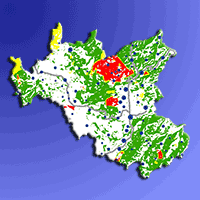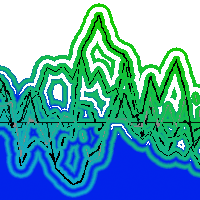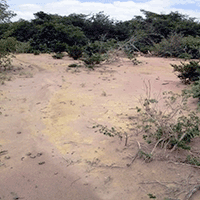
Environmental Kuznets curve for deforestation: evidence using GMM estimation for OECD and non-OECD regions
Prathibha Joshi (1), Kris Beck (2)
iForest - Biogeosciences and Forestry, Volume 10, Issue 1, Pages 196-203 (2016)
doi: https://doi.org/10.3832/ifor2066-009
Published: Dec 13, 2016 - Copyright © 2016 SISEF
Research Articles
Abstract
The depletion of the world’s forests in both tropical and temperate regions threatens to cause considerable environmental problems and hamper future economic development. However, some research has suggested that this deforestation might slow or reverse, exhibiting an Environmental Kuznets Curve (EKC). Yet previous studies investigating such an EKC have found mixed results. We therefore test for a deforestation EKC using an improved dataset from the World Development Indicators and an enhanced econometric technique Arellano-Bover/Blundell-Bond Generalized Method of Moments (GMM) estimator. We compare OECD countries with the non-OECD regions of Latin America, Asia, and Africa to determine how various factors like economic growth, population, trade, urbanization, agricultural land conversion, and cereal yield impact deforestation rates. The results show that the OECD countries have an N-shaped curve whereas only the African region experiences an income-based EKC pattern. Population growth tends to create more deforestation as does conversion to agricultural lands. More trade openness and greater urbanization impact the regions differently, but only the OECD countries have less deforestation due to better cereal yields.
Keywords
Environmental Kuznets Curve, Deforestation, GMM, OECD, Non-OECD
Authors’ Info
Authors’ address
Gordon State College, Department of Business and Public Service, 419 College Drive, Barnesville, GA 30204 (USA)
Gordon State College, Department of History and Political Science, 419 College Drive, Barnesville, GA 30204 (USA)
Corresponding author
Paper Info
Citation
Joshi P, Beck K (2016). Environmental Kuznets curve for deforestation: evidence using GMM estimation for OECD and non-OECD regions. iForest 10: 196-203. - doi: 10.3832/ifor2066-009
Academic Editor
Agostino Ferrara
Paper history
Received: Mar 24, 2016
Accepted: Oct 06, 2016
First online: Dec 13, 2016
Publication Date: Feb 28, 2017
Publication Time: 2.27 months
Copyright Information
© SISEF - The Italian Society of Silviculture and Forest Ecology 2016
Open Access
This article is distributed under the terms of the Creative Commons Attribution-Non Commercial 4.0 International (https://creativecommons.org/licenses/by-nc/4.0/), which permits unrestricted use, distribution, and reproduction in any medium, provided you give appropriate credit to the original author(s) and the source, provide a link to the Creative Commons license, and indicate if changes were made.
Web Metrics
Breakdown by View Type
Article Usage
Total Article Views: 57193
(from publication date up to now)
Breakdown by View Type
HTML Page Views: 45547
Abstract Page Views: 4779
PDF Downloads: 5237
Citation/Reference Downloads: 49
XML Downloads: 1581
Web Metrics
Days since publication: 3313
Overall contacts: 57193
Avg. contacts per week: 120.84
Citation Metrics
Article Citations
Article citations are based on data periodically collected from the Clarivate Web of Science web site
(last update: Mar 2025)
Total number of cites (since 2017): 40
Average cites per year: 4.44
Publication Metrics
by Dimensions ©
Articles citing this article
List of the papers citing this article based on CrossRef Cited-by.
References
Technical summary. In: “Climate Change 2007: Mitigation. Contribution of Working Group III to the Fourth Assessment Report of the Intergovernmental Panel on Climate Change” (Metz B, Davidson OR, Bosch PR, Dave R, Meyer LA eds). Cambridge University Press, Cambridge, United Kingdom and New York, NY, USA, pp. 25-93.
Online | Gscholar

















